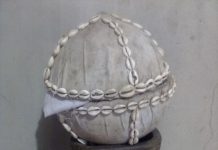Click here for previous session
It was no empty vow of their elect ones, “to be baptized with the
baptism of Christ, to take on themselves scourgings, imprisonments,
tortures, reproaches, crosses, blows, tribulation, and all temptations of the
world.” Theirs the tears, theirs the blood shed during more than ten
centuries of fierce persecution in the East; and if we reckon of their
number, as well we may, the early puritans of Europe, then the tale of
wicked deeds wrought by the persecuting churches reaches dimensions
which appall the mind. And as it was all done, nominally out of reverence for, but really in mockery of, the Prince of Peace, it is hard to say of the
Inquisitors that they knew not what they did. 181
That the Catholic Church was so effective in eliminating their opposition is of no
surprise to those who study their methodology. Their degree of savagery did not even
spare their own people, at times sacrificing members of the orthodoxy to insure complete
elimination of the Unitarians. For example, the mixed population of Catholics and
Unitarians of the people of Beziers, in the South of France, were attacked mercilessly. In
his History of The Inquisition of The Middle Ages, Henry Charles Lea brings the full
horror of the invaders’ overzealousness into sharp focus:
From infancy in arms to tottering age, not one was spared—seven
thousand, it is said, were slaughtered in the Church of Mary Magdalen to
which they had fled for asylum—and the total number of slain is set down
by the legates at nearly twenty thousand….
A fervent Cistercian contemporary informs us that when Arnaud
was asked whether the Catholics should be spared, he feared the heretics
would escape by feigning orthodoxy, and fiercely replied, “Kill them all,
for God knows his own!” In the mad carnage and pillage the town was set
on fire, and the sun of that awful July day closed on a mass of smouldering
ruins and blackened corpses—a holocaust to a deity of mercy and love whom the Cathari might well be pardoned for regarding as the Principle of
Evil. 182
The inquisitors’ use of torture was equally horrific, for it did not end at
confession. Once they procured a confession, they began torture anew to extract names of
associates until the last drop of information was squeezed from the mangled husk of what
had once been a human being.
Once accused, the pitiful defendant was guaranteed to suffer. Torture yielded the
required confession—if not out of truth, then out of the victim’s desperation to bring an
end to the pain. Horrifically, protestations of innocence and even the oath of orthodoxy
did not bring relief, for suspects professing orthodox belief were committed to a test of
faith, and here the church demonstrated the full measure of its creativity. Trials by water
and fire were popularized and sanctioned by the Catholic Church for the testing of faith
by way of Judicium Dei—Judgment of God, a concept based upon superstition. It was
believed that the purity of water would not accept a guilty body into its midst, and so
floaters were judged guilty and executed, sinkers were considered innocent, and if
rescued before drowning, spared. It was believed that earthly fire, like the flames of Hell,
would not harm those who were (in their view) the faithful Christians bearing the promise
of paradise. The “hot iron test” was the most commonly employed, as it was simple and
readily available. In this test, the accused was required to carry a redhot piece of iron for
a certain number of steps, usually nine. Judgment was offered either at the time of the test
(those burned were judged guilty) or several days later (those whose wounds were
healing were declared innocent, whereas those whose wounds became infected were deemed guilty). Other variations existed, such as determining whether or not a person
suffered a burn when an arm was immersed up to the elbow in boiling water or boiling
oil.
Lest a person presume such insane methods were rarely employed, the Council of
Rheims in 1157 ordered “trials by ordeal” to satisfy all cases of suspected heresy. 183
Now, why all this discussion about what are now littleknown and dead sects?
Well, the intent is neither to glorify them beyond the merits of their ideology, nor to
evoke sympathy for their cause, but rather to draw attention to the alternate Christian
ideologies that have become obscure in the shadow of prevailing Trinitarianism. The
Corinthians, the Basilidians, the Paulicians, the Cathari and the Carpocratians may be
littleknown today, but they were dynamic Christian ideologies that shared a significant
place in history. But history, as the saying goes, is written by the victors. “Moreover,”
writes Ehrman, “the victors in the struggles to establish Christian orthodoxy not only won
their theological battles, they also rewrote the history of the conflict …”184 The Catholic
Church attempted to systematically erase the memory of all other sects and scriptures
contrary to their own, and at this, they were largely successful. Given their vicious
methodology, we should not be surprised.
Additionally, historical attempts to vilify all other religions or Christian sects
prejudiced the minds of the populace. So successful were these efforts that the records
and holy books of those who appear to have been closest to the teachings of the apostolic
fathers have been largely lost. Similarly, those closest to embodying the practices and
creed of the prophet Jesus have come to be regarded as heretics, simply because they did not embrace the “evolved” doctrines of the Trinitarian victors. In other words, they were
condemned for nonconformity with views which, though lacking scriptural authority,
were selected by men of position and propagated for reasons of political expediency.
One of the curious elements of Trinitarian history lies in the fact that in all its
travels throughout the Christian world, it had to be forced upon a previously Unitarian
people. The Visigoths, Ostrogoths and Vandals, the Arians, Donatists and Paulicians—all
had to be muscled aside prior to the imposition of Trinitarian rule. Even in England and
Ireland there is suspicion that, contrary to official historical accounts, a good percentage
of the population were staunch Unitarian Christian prior to receiving Trinitarian
“encouragement.” Whereas Unitarians attempted to spread faith through example and
invitation, the Catholic Church spread Trinitarian faith by shearing the populace with the
sharp blades of compulsion and elimination.






